Euphorbia: description, types and care at home
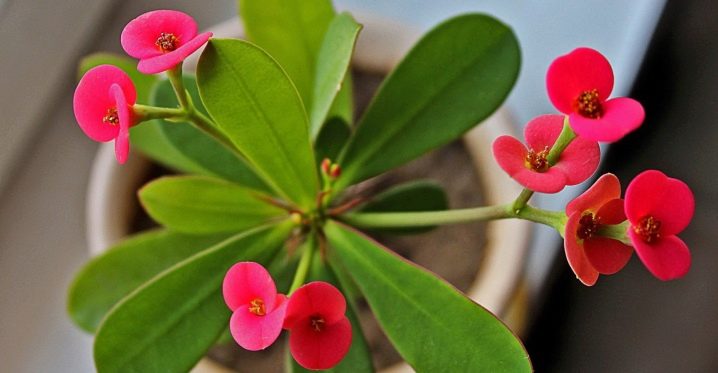
Euphorbia is well known to lovers of garden and indoor ornamental plants. It is distinguished by a huge variety of morphological characters within one genus. The plant is widely used for landscaping houses and personal plots and is loved by flower growers for its unpretentiousness and a huge variety of original forms.
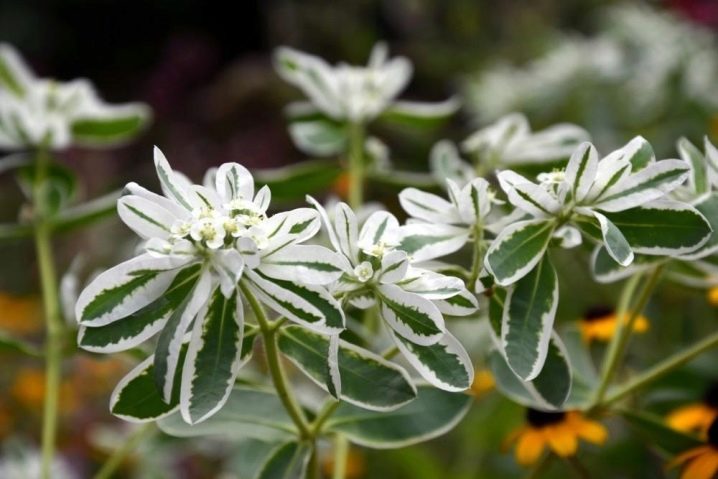
What it is?
Euphorbia (Latin Euphorbia) is the most numerous genus in the Euphorbia family (Latin Euphorbiaceae). It has about two thousand species, of which 160 grow on the territory of our country. The genus Euphorbia includes annual and perennial grasses, cactus or succulent shrubs, palms and small trees. Despite the cardinal differences in morphological characters, all members of the genus contain poisonous milky juice in their tissues.
It contains the aggressive substance euphorbin, to which the genus owes its name. When it comes into contact with the skin and mucous membranes of the nose and eyes, it causes inflammation and severe burns, which is why even grazing animals try to bypass this plant.
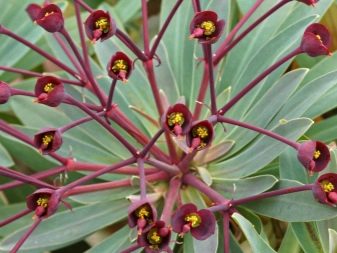
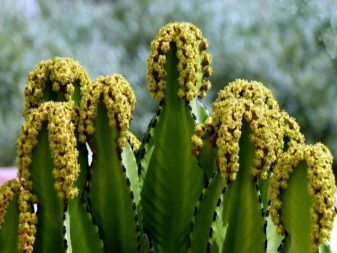

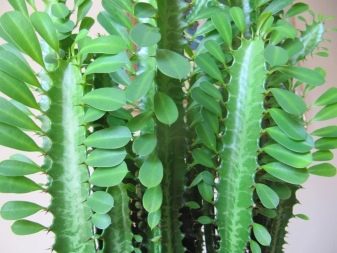
Milkweed is native to the subtropical regions of the American continent, Africa and Madagascar. Due to their tropical origin, most of the plants of the genus are succulents, have a thickened stem and are able to store a sufficient amount of moisture.
A wide variety of species of milkweed allows it to be used both for indoor and outdoor cultivation. In addition to winter gardens and window sills, plants are often decorated with rock gardens, trunks of large trees and flower beds. Both indoor and garden species are completely unpretentious. They tolerate sparse watering well, as well as dry air of the street and city apartments.
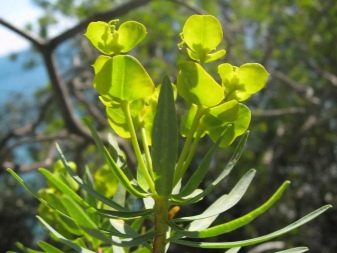
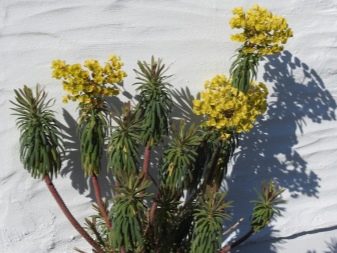
The appearance of plants is also varied. So, one flower may have an ordinary stem with leaves and not have thorns, the second may look like a typical cactus, and the third may have both thorns and leaves. It is the presence of thorns that often confuses inexperienced flower growers who confuse euphorbia with a cactus.
In fact, distinguishing between these two plants is quite simple: cactus, unlike milkweed, does not have milky juice. In addition, cactus spines are found in pubescent areoles, while milkweed spines grow on a smooth surface.
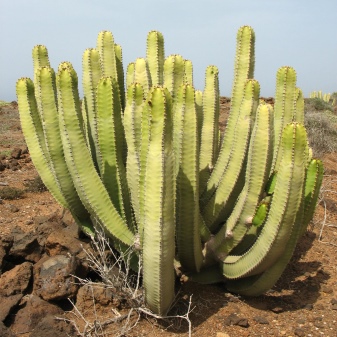
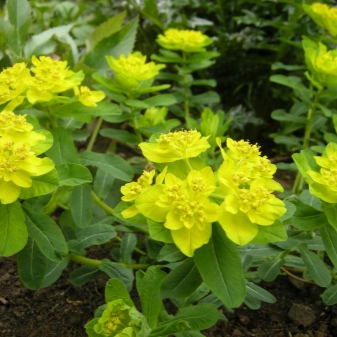
Moreover, all representatives of this genus, regardless of where the flower or tree grows and how it looks, have one more common feature - the shape of the inflorescences. Milkweed inflorescences form in a sympodial pattern, when a young, flower-like part grows out of an older one. Thus, each flower is a "structure", which includes 1 apical petal pistillate flower and 5 separate stamens left over from an old, already degenerate flower.
Around this "alloy" there are several bracts, also left over from old flowers. At the end of the flowering period, the fruit is formed, presented in the form of a three-dimensional box with three seeds inside.


Describing the spurge, one cannot fail to mention its beneficial properties. Since ancient times, many of its types have been successfully used for the treatment of pathologies of the gastrointestinal tract and kidneys, and also helped with eczema, fungal infections and headaches.
Today, milkweed treatment is quite popular in Mongolia and China, where experts are sure in the use of small doses of its poison. In folk medicine, milkweed juice is used to treat warts, treat fungi, heal wounds, and also to alleviate conditions with convulsions and gout. Plus, milky juice heals scabies well, removes age spots, reduces calluses and helps relieve puffiness.
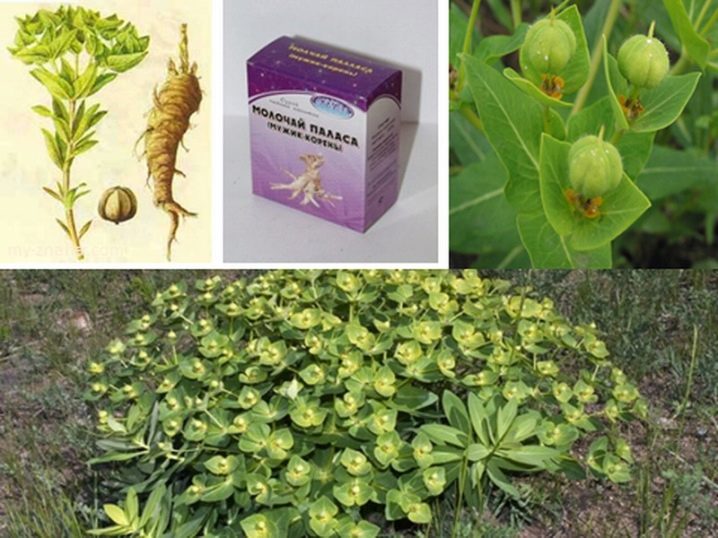
In Russia, it was used as an emetic and laxative, treated with animal bites and even defended itself from witchcraft.
Varieties
The genus spurge has a huge number of species, only in our country there are more than 160 of them. Below, we will review some of the most beautiful and unusual of them, which are loved by flower growers and amaze others with their beauty.
- Multiflorous spurge (Latin Euphorbia polychroma) is perhaps one of the most beautiful perennial species. The plant is presented in the form of a low and unpretentious shrub, reaching a height of 50-70 cm. The flower is characterized by frost resistance and high decorative characteristics. Each shoot of the plant ends with yellow inflorescences that can change their color during the growing season. So, at the initial stage of flowering, the petals have a pronounced golden hue, which gradually changes and by the middle of the season acquires yellow-green tones, and by the end of the season it becomes pale green altogether.
The multi-flowered species begins to bloom in mid-May and ends in the second half of July. At the same time, the leaves also change their color and, after flowering, become lemon-colored.
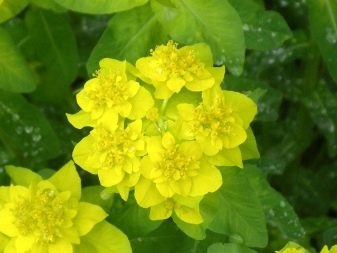
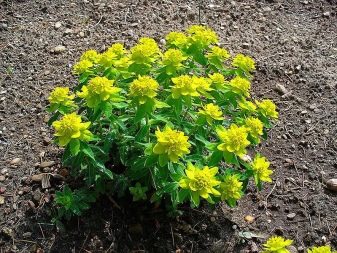
- Tar euphorbia (lat.Euphorbia resinifera) most common in Morocco and is better known for its medicinal rather than decorative properties. The pulp of the plant contains a potent substance resiniferatoxin, which has a destructive effect on nerve endings and is an effective natural anabolic. The efficacy of resin milkweed has been tested in dogs with knee problems, which did not experience pain after a single injection of the drug for five months.
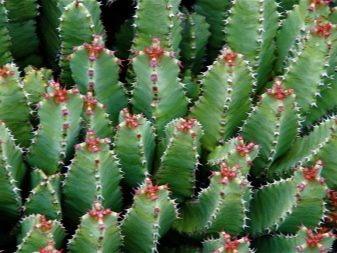
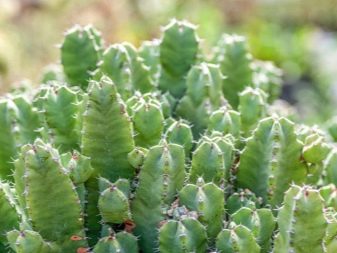
- Euphorbia most beautiful (lat.Euphorbia pulcherrima) known to the general public under the name "Star of Bethlehem", less often - poinsettia. The species is famous for the fact that it blooms at the end of December, exactly on the eve of Catholic Christmas. In Russia, poinsettia is also a popular houseplant and is perceived by domestic growers as a New Year's flower. The species is multicolored, its inflorescences can be bright red, pinkish and even white, and the fleshy leaves are deep green in color. In European countries, the plant is kept as an annual flower and thrown away after Christmas. The reason for this incorrect handling of the plant is the complexity of winter care, which consists in the need to create a special temperature regime.
The optimum temperature for a flower in winter is 8 degrees, which Russian growers provide the plant without any problems and grow the flower as a perennial.
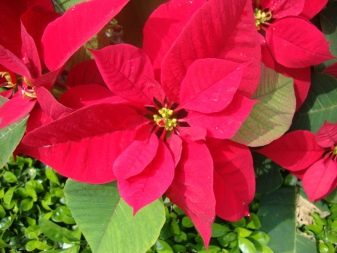

- Euphorbia edged (lat.Euphorbia marginata) is a garden annual herb, which is popularly called "bride" or "mountain snow" for its unusually high decorative qualities. The flower owes its name to large leaves with a white border around the edges. By the end of the season, they grow densely and give the plant a luxurious look. The growth of the bush is not too high and averages from 40 to 50 cm.However, with proper cultivation and creating favorable conditions, it can reach 80 cm.


- Euphorbia white-veined (lat.Euphorbia leuconeura) popularly called a palm tree. The plant is really very similar to a palm tree, but at the same time, unlike most palms, it is distinguished by its absolute unpretentiousness and high resistance to aggressive external factors. The plant thrives in dry air, but requires proper lighting and abundant watering. Outwardly, the palm tree looks very solid: it has a powerful ribbed trunk, from which large leaves with long cuttings and pointed ends extend in the upper part.The leaf blades are covered with a network of silvery-white veins, thanks to which the species got its name. The plant is fast growing and often reaches a height of 1.5 meters.
Reproduction occurs by self-sowing, however, it is better to remove the seeds attacking the pot. Otherwise, small seedlings will appear rather quickly from them, which will quickly fill the entire free area of the pot.
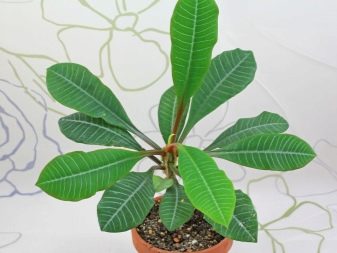

- Indoor spurge of the species Milli mix (Euphorbia milii) also very popular with florists. The plant belongs to succulents, forgives the owners of irregular watering and blooms with beautiful bright pink flowers. The height of the bush does not even reach 10 cm, which makes it possible to grow this species on the windowsill. In winter, the plant falls into a state of dormancy, needs a cool place and does not require any attention to itself.

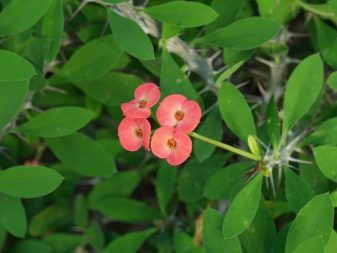
Transfer
Euphorbia does not need an annual transplant and able to grow in one place for up to 5 years. It is transplanted only when the roots no longer fit in the pot. The soil for these purposes is purchased at a flower shop or prepared independently. To do this, mix leaf humus, river sand and turf, taken in a ratio of 2: 2: 3, or garden soil, peat and river sand, taken in equal parts. Then the prepared substrate is placed in the oven and ignited at a temperature of 220 degrees for 20 minutes.

When transplanting large-sized plants, it is recommended to add a little rotted compost and birch charcoal to the composition.
In order to transplant the spurge, they take a clay or plastic pot of a slightly larger volume than the previous one, and equip drainage in it. To do this, the bottom of the container is laid out with expanded clay, small pebbles or foam, and a homemade or purchased substrate is poured on top.
It is not necessary to purchase a pot that is too deep: the root system of the milkweed is formed according to the surface type and is located close to the surface of the earth.
The main condition for choosing a pot is the presence of bottom holes, which provide a free outflow of excess liquid and exclude root rot.
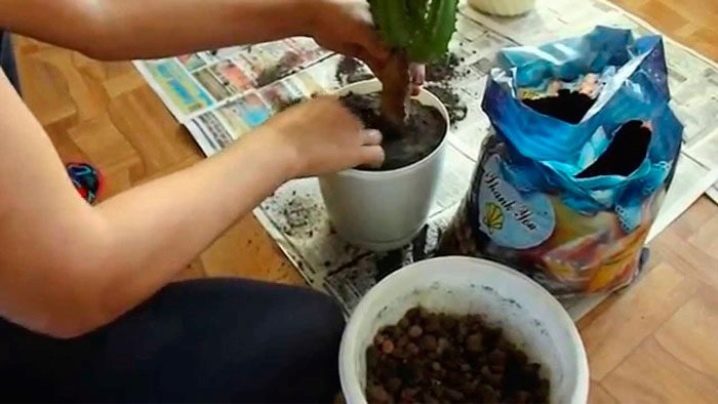
The procedure is carried out in early spring. And even if the flower was purchased at another time of the year, then it will be possible to transplant it only in the spring. The transplant is carried out by the transshipment method, trying to preserve the earthen lump. Then the rhizome with earth is lowered into a new container, sprinkled with a substrate and lightly tamped. When boarding and transferring hands should be protected with heavy gloves. This will protect the skin from the effects of milky juice and thorns.
If the transplanted flower is too long, then it is better to make special supports for it to prevent the plant from falling.
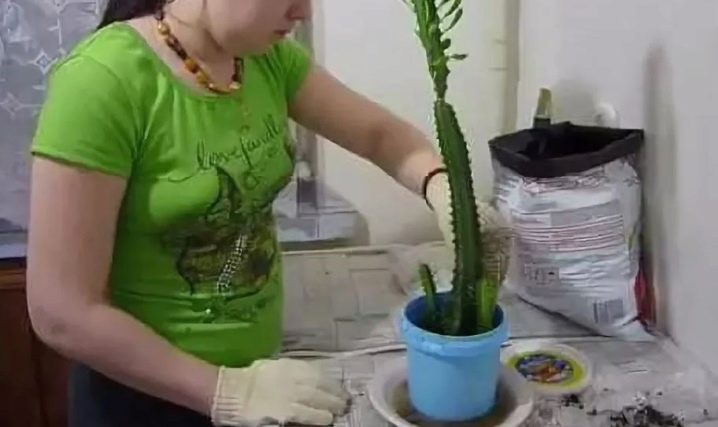
Home care
The conditions for keeping and caring for different types of milkweed are significantly different, therefore, it is simply impossible to give general recommendations that will be valid for all plants without exception. Therefore, below will be presented the rules for caring for milkweed succulent, since it is he who is most often grown by flower growers. Most succulents are absolutely unpretentious plants and do not cause much concern to their owners.
Caring for them comes down to performing procedures such as watering, dressing and pruning. In addition, for the correct growth and development of a flower, it is necessary to create and maintain certain conditions of illumination, humidity and temperature.
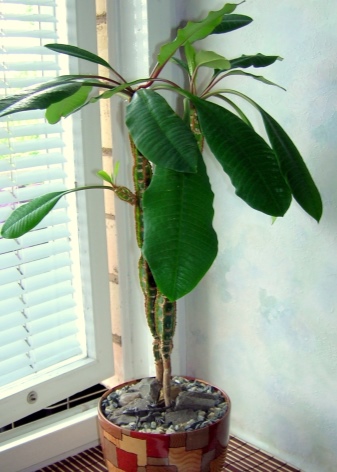

Temperature and humidity
Euphorbia tolerates moderate daily temperature fluctuations, which allows you to keep pots with home species on the balcony or open terrace in the summer. The optimum temperature for a plant in winter is 13-16 degrees. During this period, the flower is at rest and prepares for the formation of new ovaries. This temperature is most favorable for bud formation and promotes the appearance of a large number of inflorescences.
In summer, the flower feels good at 22-30 degrees., and he can be in such temperature conditions both at home and on the street. The main thing in this case is to ensure the absence of drafts, which the spurge cannot stand. There are no special requirements for air humidity for milkweed. Plants feel good in urban apartments and do not need additional moisture.
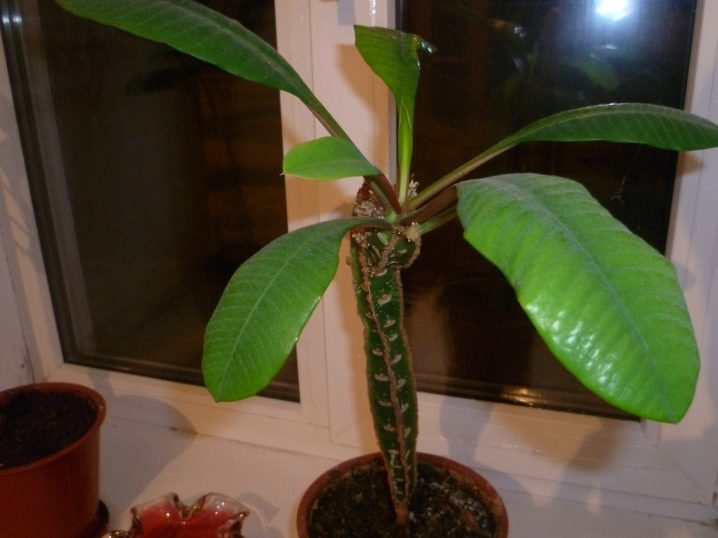
Lighting
All types of milkweed need a lot of light, so the ideal option for placing them in an apartment is a south or southwest window. In winter, before the onset of the dormant phase and immediately after leaving it, the plants require additional lighting. Otherwise, the stems begin to stretch and thin out. With poor lighting, the spurge practically stops growing and begins to wither.
As artificial lighting it is recommended to use phytolamps, with the help of which you can independently extend the daylight hours for plants to the prescribed 10 hours.
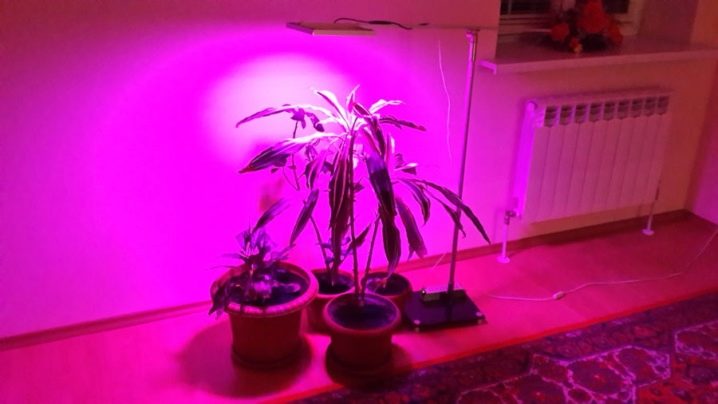
However, there are exceptions among the milkweed who prefer diffused light to direct sunlight. Such species include, for example, poinsettia, which can be grown in moderately shaded areas.
Watering
Water spurge with settled water at room temperature. Watering frequency depends on indoor humidity, flower size and season. So, in spring, summer and autumn, the plant is watered abundantly a couple of times a month, trying to prevent excessive drying of the soil. On particularly hot summer days, weekly watering is allowed. In winter, plants are watered once a month.
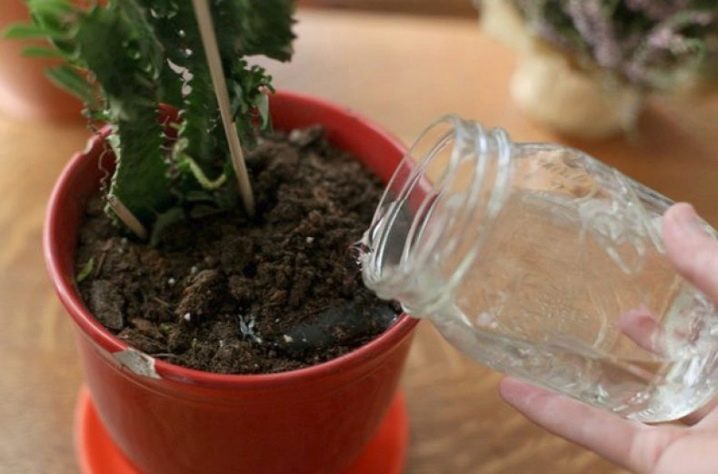
During watering, it is necessary to ensure that so that water does not stagnate in the pot or pallet. This is especially true for milkweed with a thick, fleshy stem, which quickly decays from excess water. On the other hand, overdrying the earthen coma also does not bode well for the plant, and some species, such as Mila's euphorbia, can completely shed their foliage.
Spraying of plants is carried out only in the summer and only during the heat. At other times, spurge does not need spraying and feels great in any humidity.
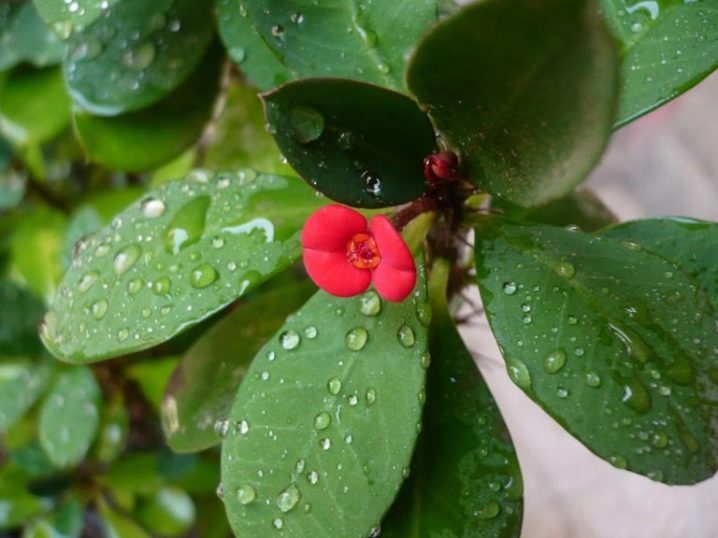
Top dressing
Euphorbia should be fertilized only during the growth period. At this time, the plants are fed with complex mineral supplements for cacti or succulents. At any other time, especially in winter, when the flower has entered a state of dormancy, it is impossible to feed the plants.
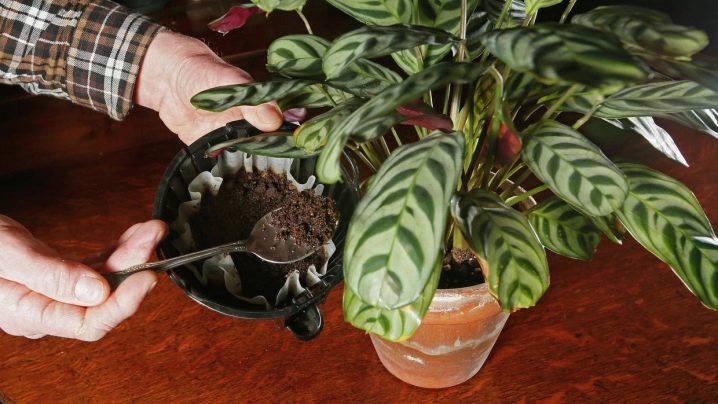
Pruning
Cactus euphorbia does not need to be trimmed. The procedure is carried out only in relation to highly branching species, for example, Mil, in which the top of the stem is pinched. This prevents the flower from leaving for growth and contributes to the formation of a dense and lush crown. Pruning is carried out before the growing season or immediately after flowering. First of all, dry and old leaves and shoots are removed, and only after that they begin to form a beautiful crown.
In the year of pruning, the plants do not bloom, but the next year they delight the owners with a very abundant color.
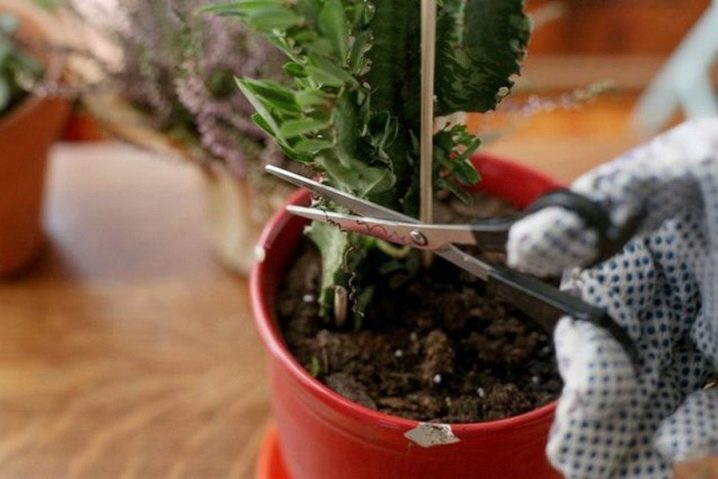
Reproduction
There are three ways of reproduction of milkweed - with the help of seeds, cuttings and dividing the bush. In the first method, the seeds are placed in the ground to a depth of 2 mm, moistened with a spray bottle and covered with glass. Every day the glass is removed for 10-15 minutes and the soil is allowed to breathe. The optimum air temperature for germinating seeds is 25 degrees. Moistening the substrate is carried out as needed, without allowing it to dry out.
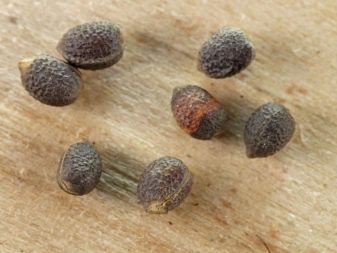
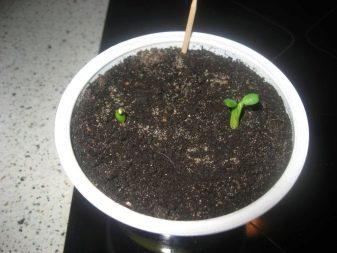
After the seeds sprout, the greenhouse is dismantled, and the boxes are placed in a warm and well-lit place. After young shoots reach a size of 5 cm, they are transplanted to a permanent place and transferred to a general care regimen. Sowing of garden species of milkweed is carried out in the fall. The land is well mulched with humus or sawdust and left to winter.
In the spring, after night temperatures exceed 5-7 degrees, the mulch is removed and sprouts are expected to appear.
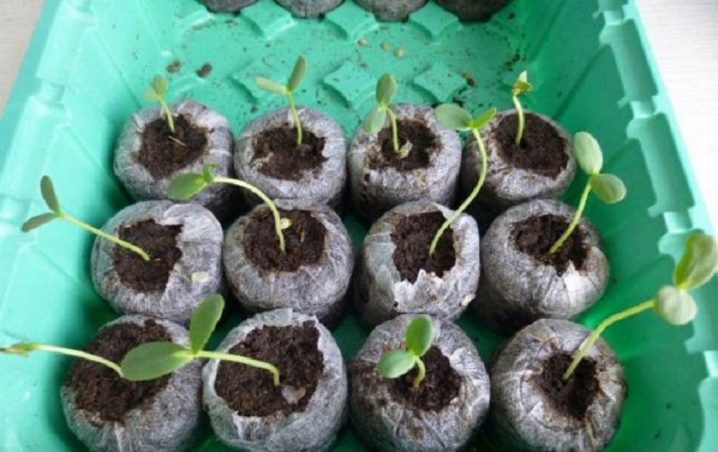
Reproduction by cuttings is performed in late May or early June. To do this, a strong stalk is cut off from a young and healthy shoot, the poisonous juice is allowed to drain and the cut is sprinkled with activated carbon. Then the cuttings are dried for 1-2 days, after which they are planted in a substrate from a mixture of leaf humus, river sand and peat, taken in equal proportions. Rooting of cuttings occurs within a month, after which they are transplanted into open ground.
You need to take care of young shoots in the same way as for adult plants, not forgetting to water and feed them on time.
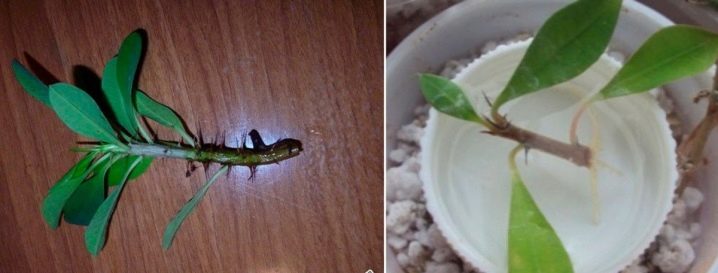
Reproduction by dividing the bush is performed at the end of April during the budding process. To do this, the plant is dug up, the substrate is shaken off the rhizome and the rhizome is carefully divided into several parts by hand. Then the root bridges are cut with a sharp knife and the cut sites are sprinkled with activated carbon. The division of the bush is carried out in such a way that at least two buds are present on each new bush. Then each plant is planted on its own in a permanent place and watered a day later.
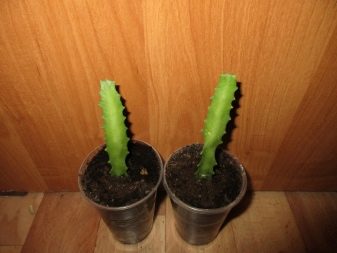
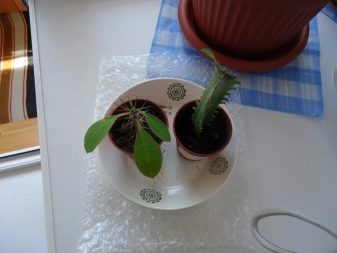
This cannot be done right away, otherwise the cut wounds will not have time to heal and the roots will begin to rot.
Diseases and pests
Most types of milkweed have excellent immunity and are highly resistant to various kinds of diseases. However, due to poor maintenance, plants can still get sick. So, yellowing of the leaves during the growing season indicates stagnant water in the pot or drafts. This unpleasant phenomenon should not be confused with the yellowing of a few lower leaves, which is a completely natural process and is not caused by errors in cultivation.
The yellowing of the leaves in the fall should also not be alarming - this way the plant simply prepares itself for dormancy.
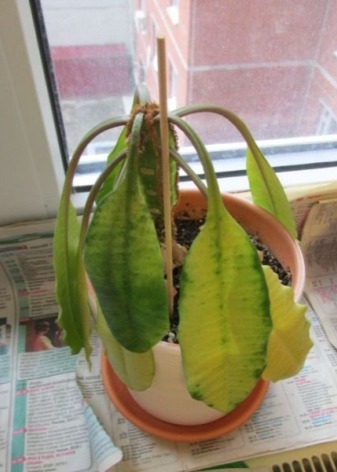
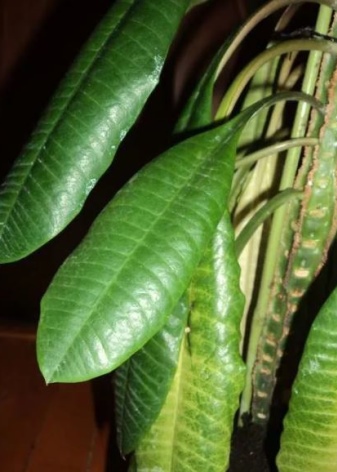
The appearance of single brown spots on the surface of the flower indicates that it has received sunburn and requires the creation of diffused lighting.
Numerous brown spots on the stem indicate decay processes that occur due to stagnation of liquid in the ground. When the first signs of the disease appear, it is recommended to stop watering for two weeks and place the flower in a warm and calm place. Intensive leaf fall in summer indicates a lack of phosphorus. In this case, regardless of the flowering phase of the milkweed, it must be fed any phosphorus-containing additive, for example, superphosphate.


The falling of the lower leaves indicates poor watering. The succulent substrate should not dry out more than 1/4 of the surface. Mass darkening of the leaves indicates insufficient lighting. In this case, it is necessary to change the location of the flower and put it in a more sunny place. with the help of the drug "Actellik".
One of the reasons for the appearance of white bloom on the leaves may be the invasion of mealybugs. In this case, treating the plant with soapy water with the addition of a few drops of machine oil helps well. You can also use infusion of calendula and garlic. The pest does not tolerate these substances and quickly retreats.
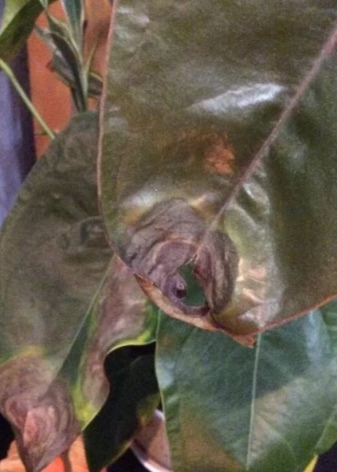
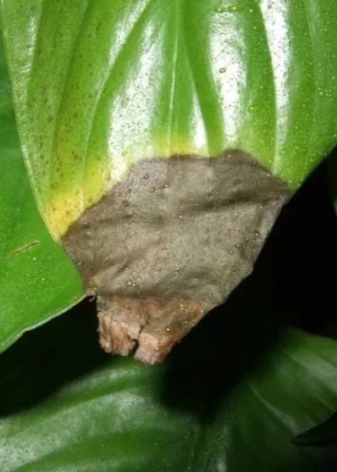
For information on how to properly care for milkweed, see the next video.























































The comment was sent successfully.